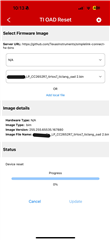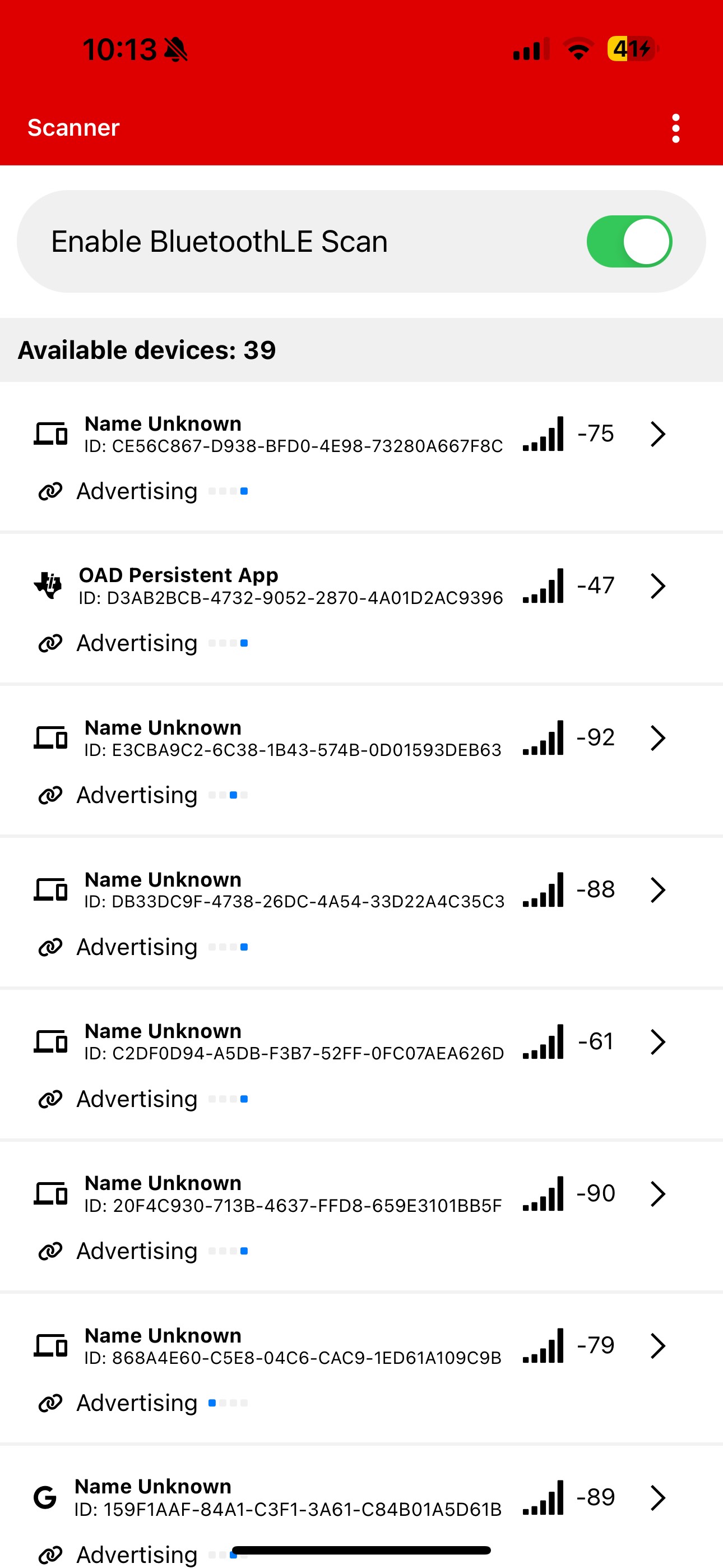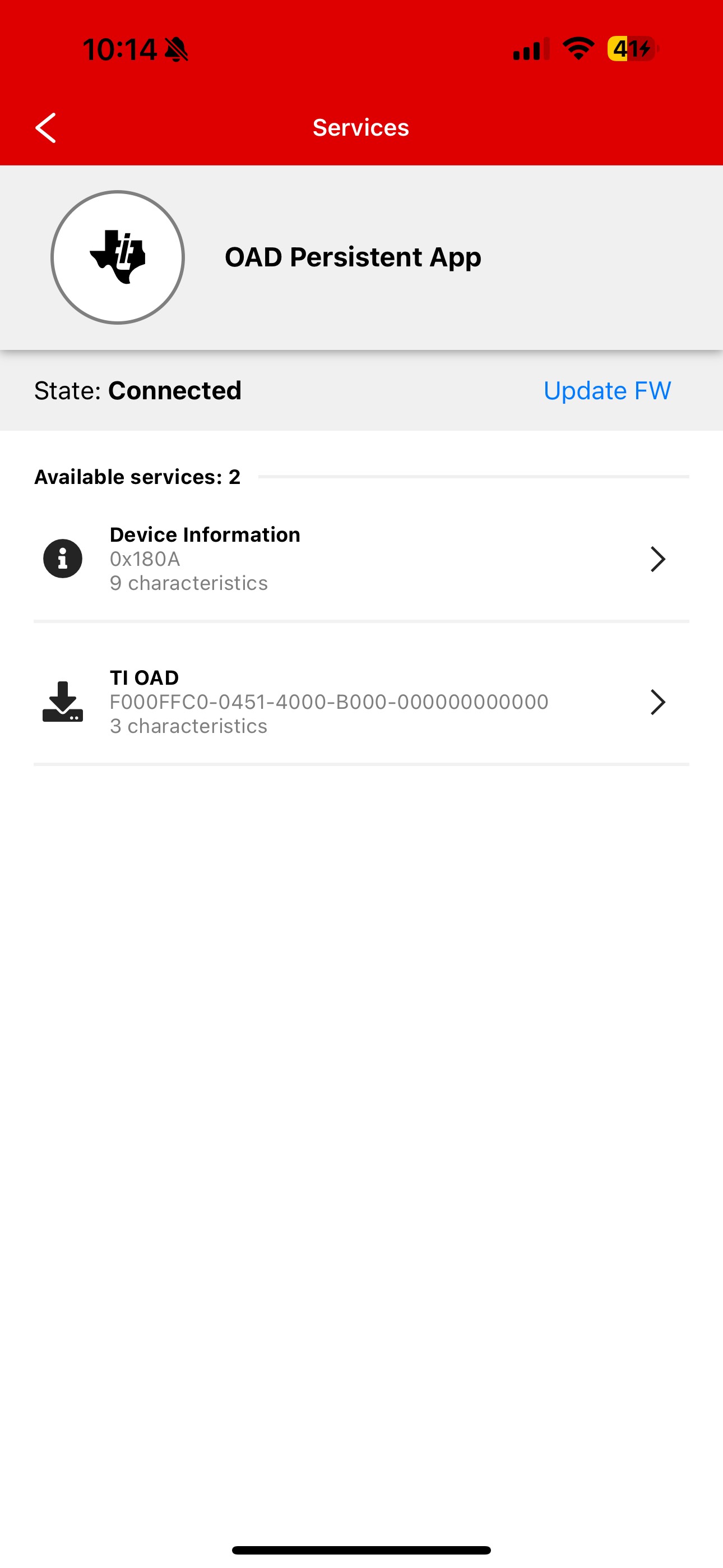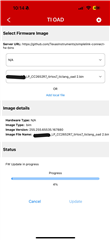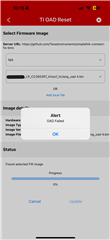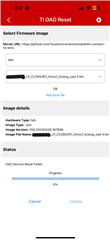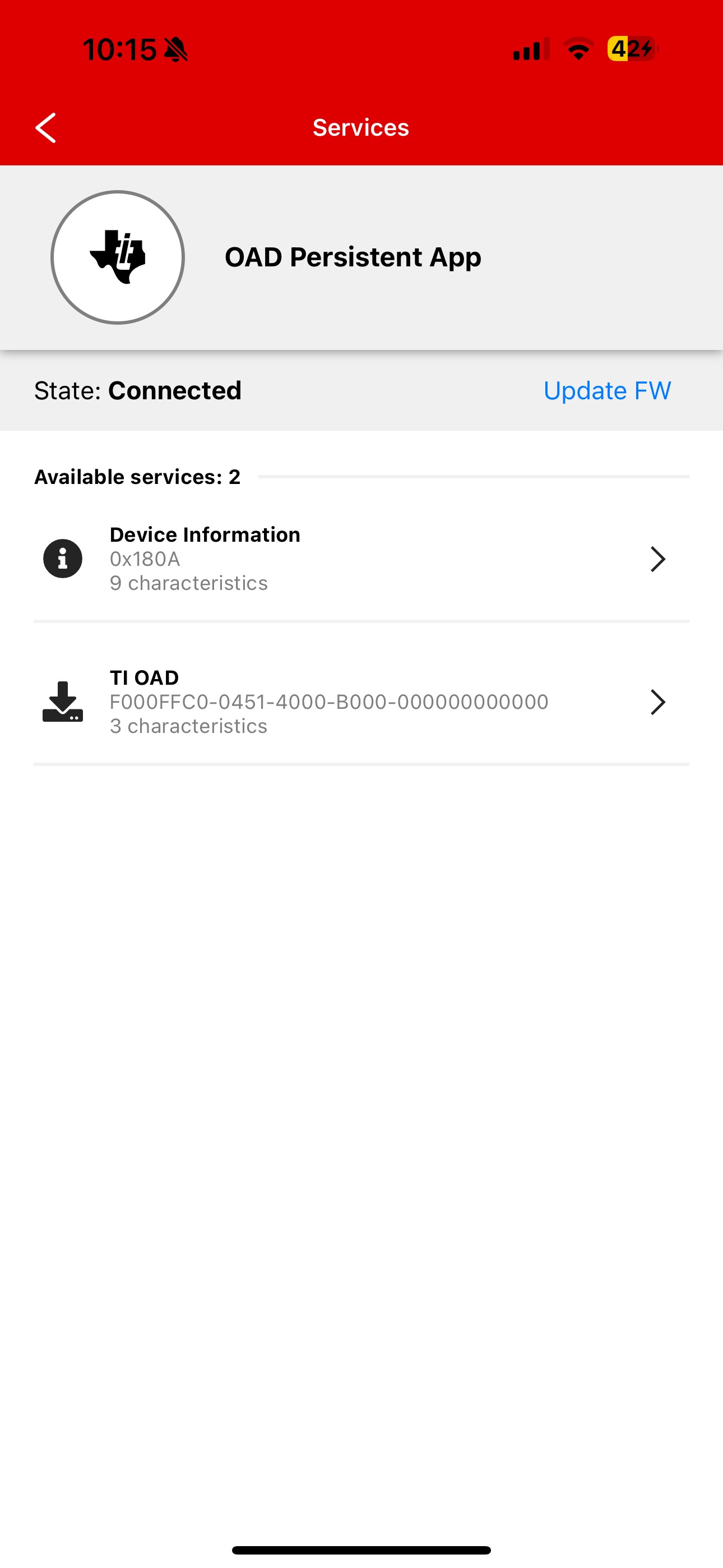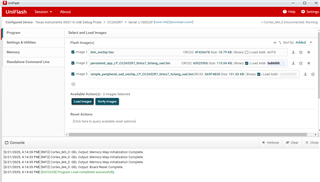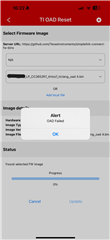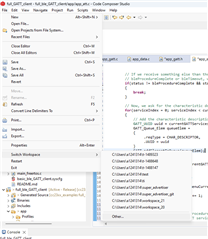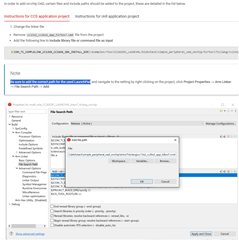Other Parts Discussed in Thread: CC2652R7
Tool/software:
Hi supporting team,
I am currently working on a firmware based on simple peripheral, and simplelink_cc13xx_cc26xx_sdk_7_40_00_77 SDK. I want to add the on-chip OAD feature to my firmware, I tried to follow the instruction and run the example (Bluetooth Low Energy Enhanced Over the Air Download (OAD) Fundamentals — CC13XX CC26XX SimpleLink Academy):
when I flashed the .bin files from the ccs after I built, then I tried to update the firmware to a desired one, it doesn't work and said 'service not found' or sometimes said 'OAD service reset failed':

(I set the address of persistent app as 0x86000 because this text, I tried to set 0x38000 as it is mentioned at simplelink academy, but failed to process as well:)
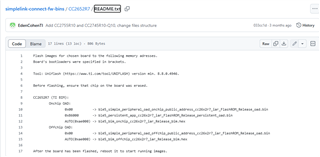
I also found that sometime after 'OAD service reset failed', the firmware is change to persistent app. Then I disconnect and reconnect the device again, I can continue to use OAD update to updated to the desired firmware, this behavior is wired, the whole process should not be split like this?
But it works well when I used the .hex and .bin files directly from this (simplelink-connect-fw-bins/CC2652R7/7_10_00_98_eng/simple_peripheral_oad_onchip_LP_CC2652R7_tirtos7_ticlang_oad-v1.0.0.bin at main · TexasInstruments/simplelink-connect-fw-bins · GitHub):
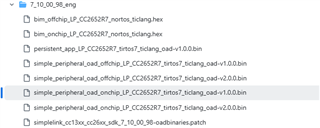
May I know is there any differences between the files on the website and from the example?
Or is there any mistake I made during the process?
Thank you so much!
Best regards,
Jermyn


